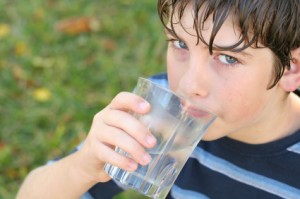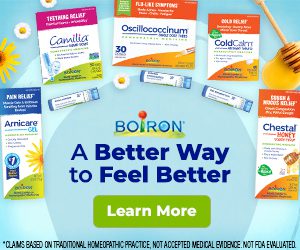Manic: Our hectic back-to-school schedule with homework and activities that leave our family little time to remember important details like staying hydrated!
Managed: In addition to everything else we parents have to remember, we also can’t forget to keep our kids hydrated. Managedmoms.com writer Lisa Walton reminds us how important this is and has some creative ways to make sure that our kids are getting enough fluids. Read on for some helpful tips!
Lisa says:
 With Labor Day behind us, many states are saying goodbye to summer. However, in parts of the country, it’s still HOT. With students back to school and beginning Fall sports it’s important that they stay hydrated. This is not always an easy task when they are out of our sight at school and practice.
With Labor Day behind us, many states are saying goodbye to summer. However, in parts of the country, it’s still HOT. With students back to school and beginning Fall sports it’s important that they stay hydrated. This is not always an easy task when they are out of our sight at school and practice.
Why is it important?
Children don’t have the same ability to cool down efficiently as adults do. This is why it’s critical to keep them hydrated. When children sweat, fluids leave their bodies. If they are not replacing fluids as quickly as they are losing fluids through sweat, they risk severe dehydration, which can be life-threatening. Following a few simple precautions and suggestions can help keep kids safe.
Signs of Dehydration:
Early signs of dehydration in children are fatigue and irritability. If your child seems to be much less energetic or is crabby, it’s time to get him out of the heat for a water break. Other symptoms may be sunken eyes, dry mucous membranes, decrease in urination, headaches, nausea and clammy skin.
How much water does my child need?
Each child is different; an active child may need more water than a child staying indoors playing video games. However, the American Academy of Pediatrics (AAP) recommends that children drink six glasses of water on an average day. During activity, however, your child can lose up to a half-liter of fluid per hour. The AAP suggests about 5 ounces (or two kid-size gulps) of water or a sports drink every 20 minutes for an 88-pound child. Kids and teens weighing about 132 pounds should drink 9 ounces. If possible, take all hydration breaks in a shady spot. The American College of Sports Medicine recommends drinking the equivalent of a standard bottle of water (16.9 oz.) about 2 hours before vigorous exercise.
Don’t wait for your child to tell you they are thirsty. Most children do not have a good mechanism to recognize thirst. In fact, by the time they realize they are thirsty they are already dehydrated!
Teach by example:
By regularly offering kids healthy drink choices at meals and snacks, children become used to staying hydrated. Reinforce staying hydrated by keeping liquids and hydrating snacks and foods in your child’s lunchbox or backpack. Model good hydration practices for your child. Frequently discuss healthy liquid choices, and provide examples for your kids.
Make a counting game of it for younger children (drink eight gulps of water), offer rewards or incentives if needed. Talk to your child’s coach about taking frequent breaks for hydration. Talk to teachers of younger children to ensure water breaks happen. Offer water and fruits for healthy snacks or sports breaks during games. Always send water to practice! Don’t rely on coaches to give enough water breaks or your child to get adequate amounts from a drinking fountain.
Juice, Sodas, or Sports Drinks?
Fruit juice has a higher concentration of sugar than whole fruit and because of that, it’s not the best beverage choice for hydration during strenuous exercise. But the AAP (American Academy of Pediatric) does see a place for it among your options: for activity periods longer than three hours, the AAP suggests a drink diluted with half water and half 100-percent juice.
Many parents rely on using sports drinks for getting adequate amounts of liquids into your child during activities. Studies have shown that children routinely prefer flavored beverages to plain water and will drink up to 90 percent more when it is offered to them. Sports drinks also replace electrolytes lost from the body through sweating. Such beverages, however should be limited to use during athletic competitions or active play on a hot day, as they are generally high in carbohydrates and calories. Be aware, there is often more sugar in some sports drinks then in soda. Often just adding lemon or oranges to water will improve taste and increase intake.
Avoid drinks that have caffeine, such as iced tea or soda. As a diuretic, caffeine can contribute to the dehydration process by increasing fluid loss. In addition, as a stimulant, it can depress the symptoms of dehydration. Beverages such as soda or juice-flavored drinks might taste refreshing, but the high sugar content is unhealthy for many reasons and should be avoided for hydration except as a last resort.
Foods that help hydrate:
1. Fruits and veggies: these contain 70-95% water. Try produce like watermelon, cantaloupe, berries, carrots, cucumbers, and lettuce.
Fun idea: Freeze cups of applesauce for an icy summer treat.
2. Yogurt: contains up to 80% water either plain or with fruit.
Fun idea: Blend some frozen berries with plain yogurt for ten seconds for a sorbet
3. Oatmeal, beans, couscous, & pasta: These foods absorb more than 50 percent of their weight in water as they cook.
Fun idea: Serve cute pasta shapes: bow ties, wagon wheels, or shells to make it appealing.
4. Popsicles/Frozen Fruit bars: get little ones hydrated; using 100% fruit bars or low sugar are a better alternative.
Fun idea: puree watermelon, mix with white grape juice and freeze
5. Milk: it provides protein,Vitamin D and calcium. It provides optimal nutrition and can hydrate all without saturated fats.
About Lisa:
Lisa Walton–Parenting tips
Valley Teacher and Mother
Lisa Walton has been a teacher in the Valley for over 18 years. She holds a Bachelor’s Degree in Deaf Education from Illinois State University; and Master’s Degree in Special Education from Arizona State University. She currently works as an itinerant teacher, collaborating with regular education teachers in the public schools.







